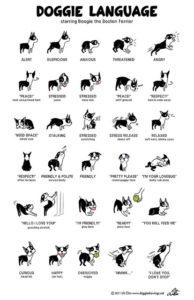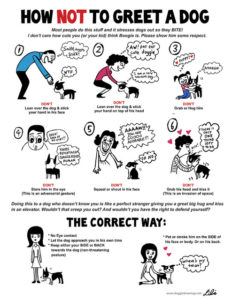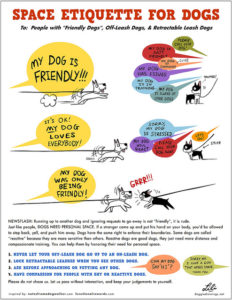Editor’s Note: Healthy Paws is a column sponsored and written by the owners of Clarendon Animal Care, a full-service, general practice veterinary clinic. The clinic is located 3000 10th Street N., Suite B. and can be reached at 703-997-9776.
Clarendon Animal Care presents K9 Harmony’s Guide to Keeping Your Dog Healthy and Happy at the Dog Park:
Images of a dog park brings to mind wagging tails and romping pups. The dog park can be a great way for your dog to get some much needed exercise and social time with other friendly pups, however there are some important things to keep in mind!
- Remember that puppies and adult dogs play very differently. If you have a young puppy, avoid taking them to the dog park until they are at least six months of age. Teaching them to be calm around other dogs on-leash is still socialization, and just as important if not more so, than the opportunity to run off-leash with adult dogs. When you go initially, try to avoid peak times so as to not overwhelm them.
- Watch out for prey-driven behaviors such as a group of dogs chasing one dog around and around the park. This can result in injury, not to mention an unpleasant experience for that dog! Appropriate play consists of each pair or group of dogs alternating roles, for example one dog may be chasing the other dog, but shortly after they may be being chased. Some dogs love to wrestle! If that’s the case, make sure that if a dog is laying on it’s back, it has the opportunity to get up rather than being held in that position by another dog.
- If your dog is small (about 25 lbs and under) consider taking them to a park that has a separate small dog area, or at off times. Your small dog may act like they want to run with the big dogs, but they can easily bite off more than they can chew and get injured from rough play with a larger dog.
- Mill around the dog park rather than staying stationary! Dogs tend to gather where we humans are standing in the dog park. By keeping yourself and others moving, you’ll keep the dogs moving too. This will spread everyone out and minimize the chances of a dog fight!
-
 Learn your dog’s body language! Not all wagging tails are friendly, and not all panting is the result of heavy exercise. These can be signs of stress and that your dog is uncomfortable. Instead, make sure your dog is moving in a fluid manner, with a loose body and a tail wagging at back level.
Learn your dog’s body language! Not all wagging tails are friendly, and not all panting is the result of heavy exercise. These can be signs of stress and that your dog is uncomfortable. Instead, make sure your dog is moving in a fluid manner, with a loose body and a tail wagging at back level.
- Keep your eye on your dog! Your dog should be under your direct supervision while at the park. If you’re having a conversation with some other dog owners, make sure you’re still cognizant of what your dog is up to and able to act if you need to interrupt inappropriate play.
- Make sure your dog is fantastic about coming to you when called! There’s nothing worse than having to chase your dog around the dog park when YOU’RE ready to go home. You’ll strengthen your relationship with your dog and have a safer experience because of it!




